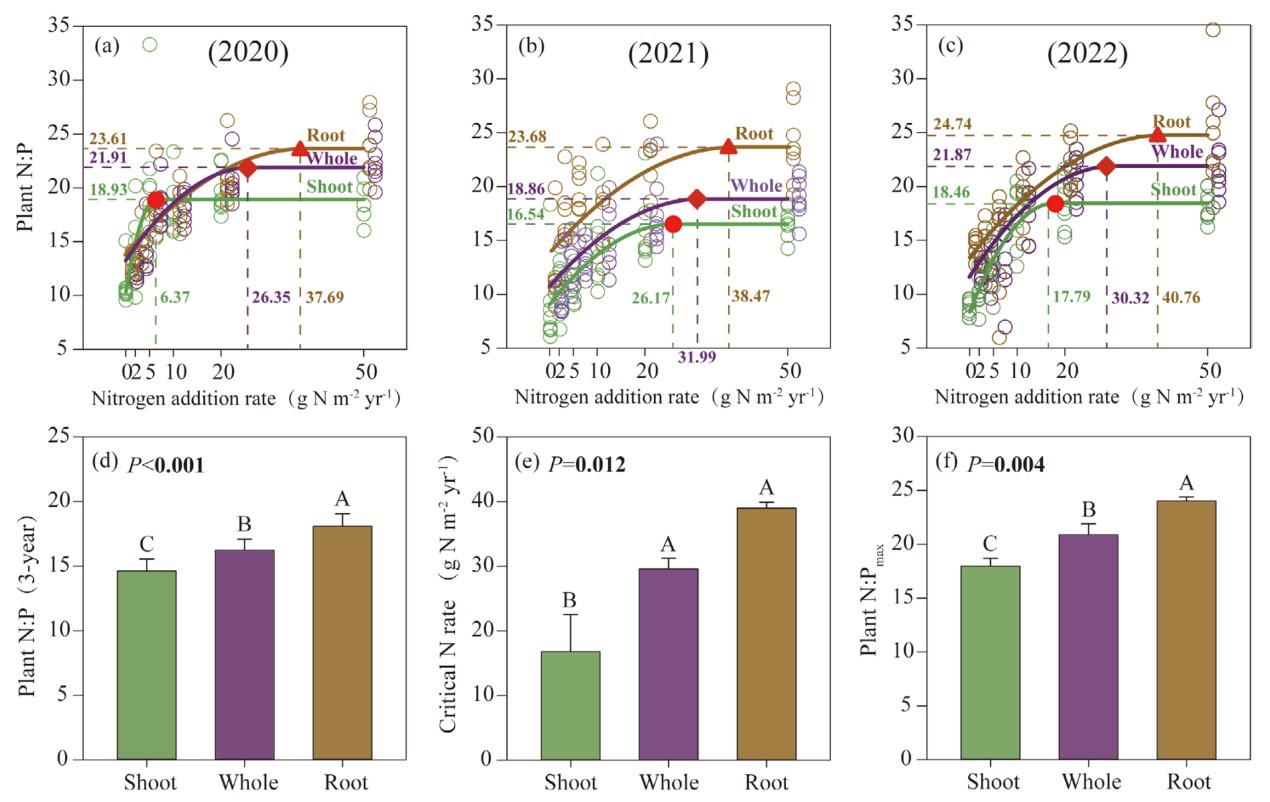Nitrogen Enrichment Upsets Plant Nutrient Equilibrium, New Study Reveals
A recent investigation published in Global Change Biology has found that adding nitrogen to temperate grasslands disrupts the natural balance between nitrogen and phosphorus in plants, with root systems showing a markedly stronger response than aboveground organs.
Researchers from the Chinese Academy of Sciences’ Institute of Applied Ecology conducted long-term experiments in a temperate steppe at the Erguna Forest-Grassland Ecotone Research Station, unveiling that traditional studies focusing solely on aboveground plant parts might significantly underestimate the impacts of nutrient imbalance. “This imbalance, invisible to traditional aboveground studies, could destabilize the food webs of entire belowground ecosystems,” explains lead researcher Dr. Lü Xiaotao.
The study observed non-linear responses in the nitrogen-to-phosphorus (N:P) ratio in both roots and shoots as nitrogen inputs increased (Fig. 1). Notably, the nitrogen saturation threshold for roots was determined to be 39.0 g N m⁻² yr⁻¹—more than double that of the shoots, which had a threshold of 16.8 g N m⁻² yr⁻¹. Furthermore, the root systems exhibited a lower stoichiometric homeostasis index (H = 6.25) compared to the aboveground parts (H = 6.58), indicating a lower ability to maintain a stable internal nutrient ratio or suggesting that an increasingly phosphorus-deficient as nitrogen inputs rose. These findings suggest that roots, which typically contribute 60–70% of the grassland’s primary productivity, are more vulnerable to changes in nutrient supply.
Stoichiometric homeostasis is a key concept in ecological chemistry. It describes a plant’s inherent capacity to stabilize its N:P ratio despite fluctuations in soil nutrient levels. A higher homeostasis coefficient (H-value) means that an organ can more strictly regulate its nutrient composition, whereas a lower value points to a greater sensitivity to environmental changes. This nuanced understanding of nutrient regulation, particularly the disparity between roots and shoots, offers essential insights for refining biogeochemical models under global change scenarios.
Figure 1 illustrates the non-linear response of grassland plant N:P ratios to varying levels of nitrogen addition, highlighting the significant differences in nutrient regulation between above- and belowground plant parts.
Current Earth system (biogeochemical) models, which predominantly use shoot data, likely underestimate nitrogen-driven disruptions, warn the researchers. By integrating these detailed mechanistic insights of this study, future predictive models can better address the complexities of nutrient dynamics in changing global environments.

Fig. 1. Nitrogen enrichment’s impact on plant N:P stoichiometry.



